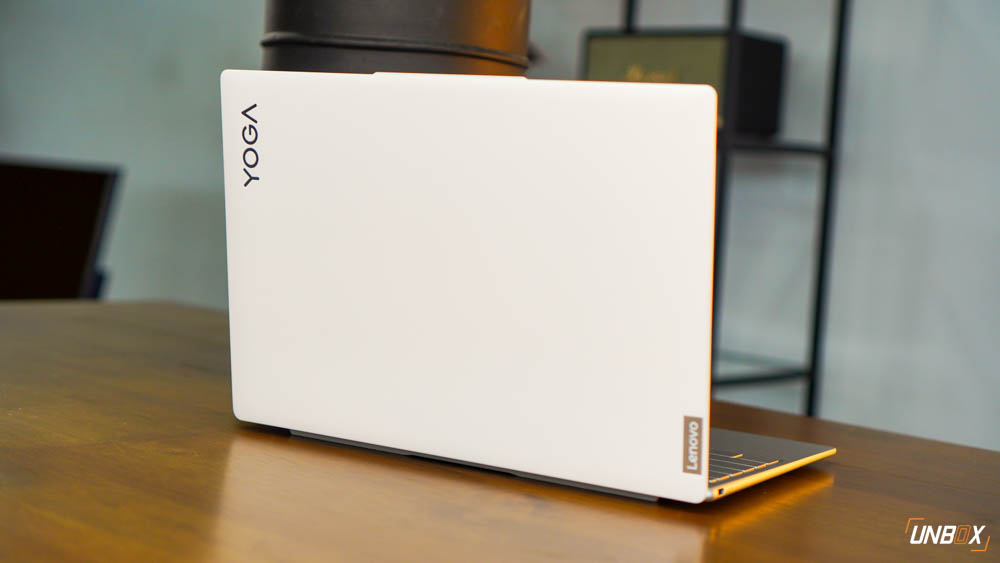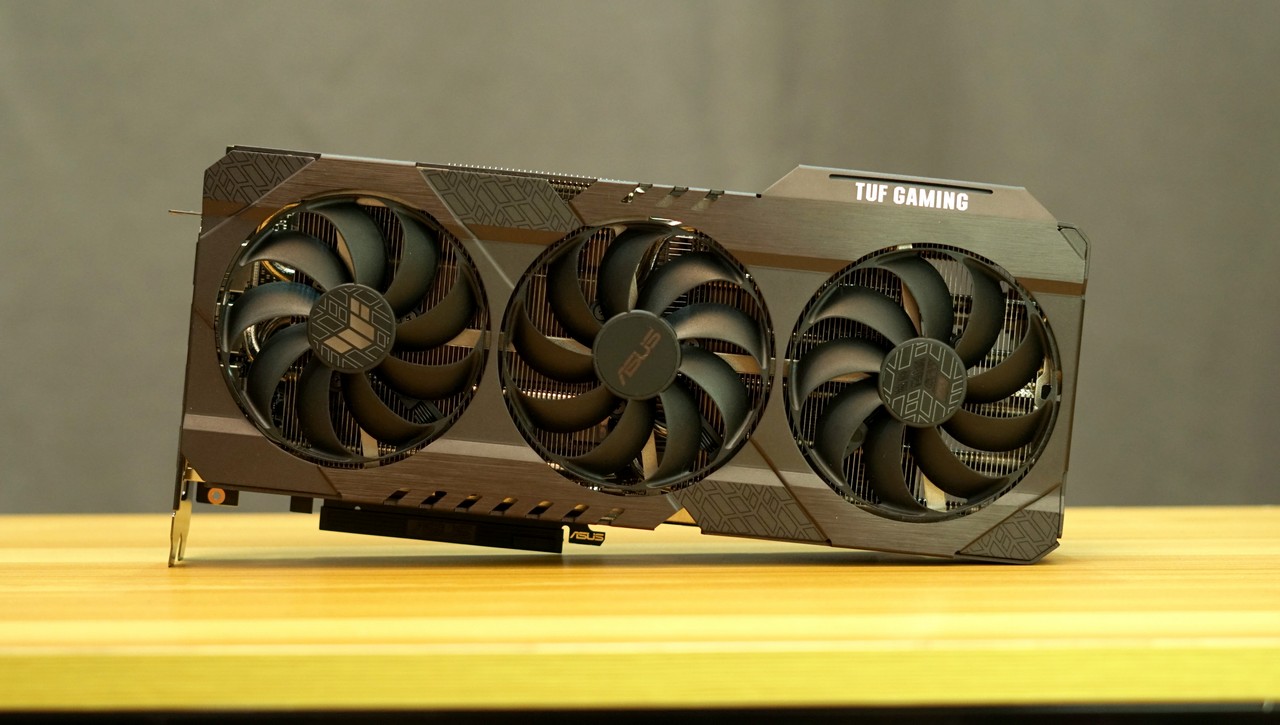
Verdict: NVIDIA’s new Ampere-based cards have arrived, and like clockwork, AIB partners have been slowly releasing their own custom cards based on the new tech. Taiwanese manufacturer ASUS was one of the first few companies out of the gate with their own custom card based on NVIDIA’s RTX 3080, in the form of the RTX 3080 TUF Gaming OC. ASUS did a lot of things right with this card, and despite being feature-heavy the card is the best performing and most affordable of the current crop of Ampere cards available.
The ASUS RTX 3080 TUF Gaming OC is priced at Php 48,490, while the non-OC variant retails for Php 41,000.
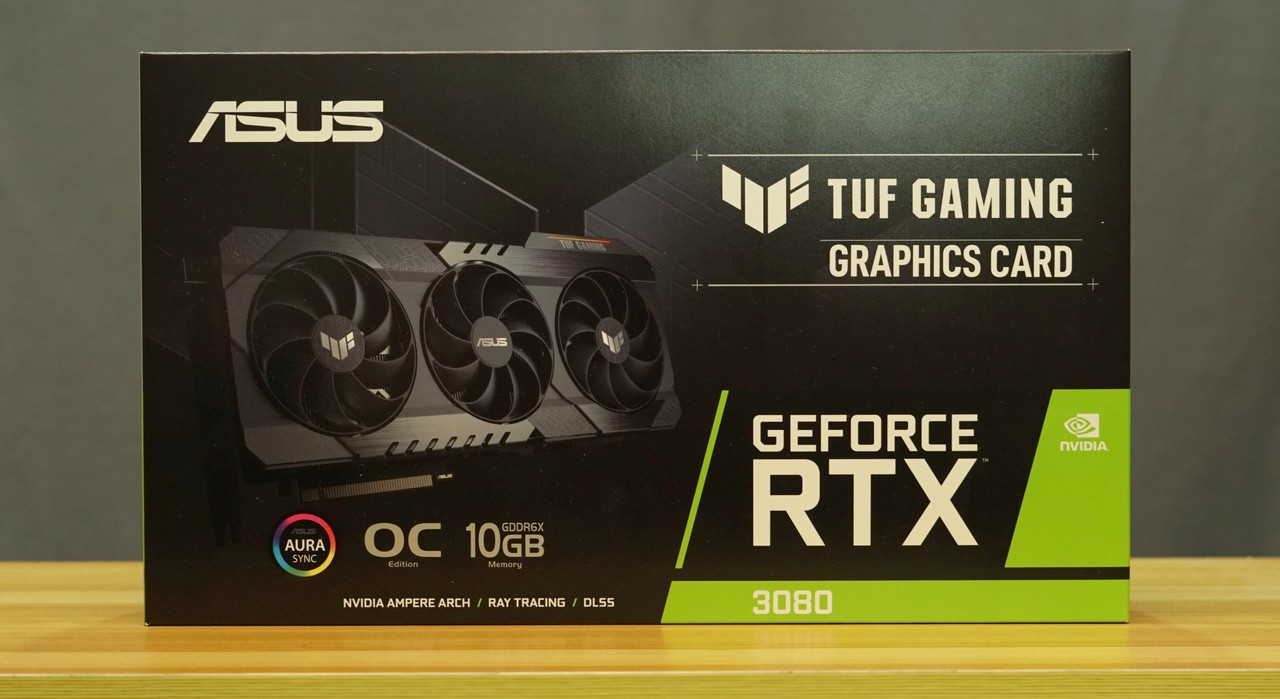
2020 might be the worst year ever for a lot of things, but it’s one of the best years to be a PC gamer. There’s plenty of great announcements and releases so far, and competition in both the CPU space and the GPU space has produced awesome hardware. One of those bright spots is NVIDIA’s announcement and release of their new Ampere-based GPUs, which includes the RTX 3080. While we weren’t able to get a hold of their founder’s edition card, we were able to grab a review sample of ASUS take on the RTX 3080, in the form of the RTX 3080 TUF Gaming OC. While it’s not as flashy as ASUS’ Strix line, the new card delivers excellent performance that should give 4K gamers all the horsepower they need for the foreseeable future.
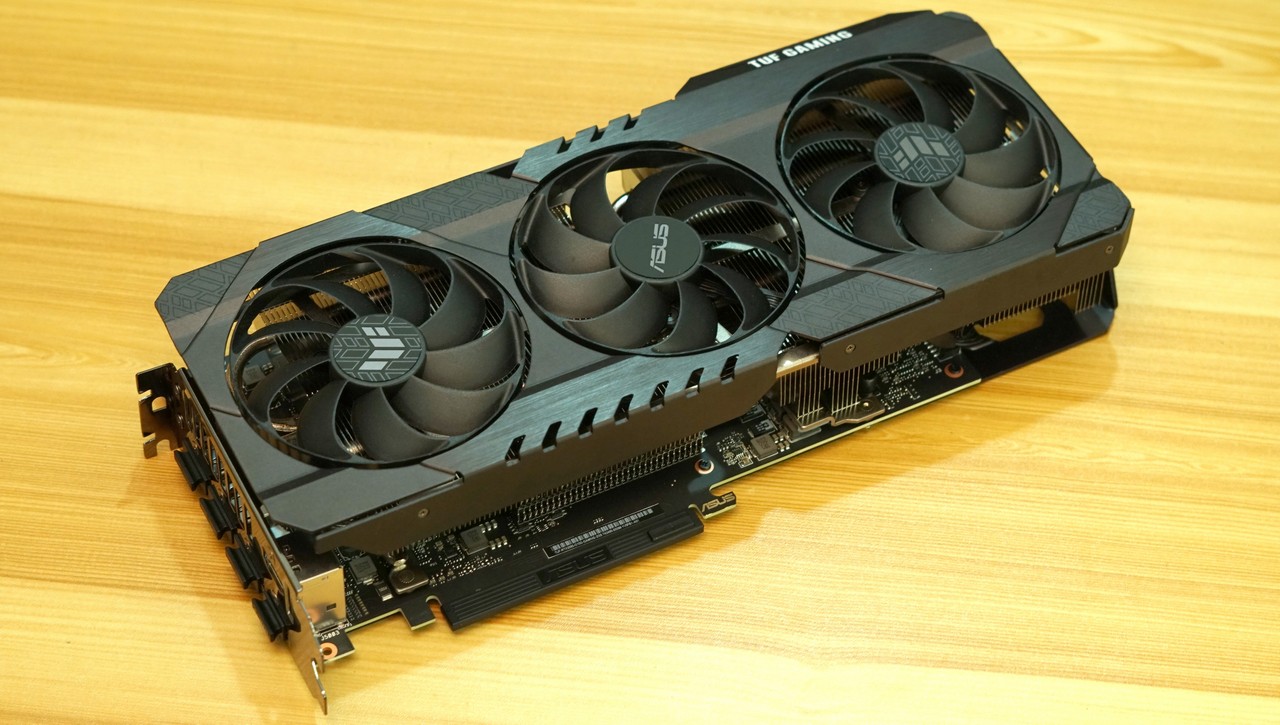
Design
While NVIDIA’s Founder’s Edition cards are sleek and look drastically different from the previous generation, ASUS’ take on Ampere is comfortingly familiar. If you’ve seen or handled a high-end card from ASUS derived from the Turing architecture, you know what you’re in for – massive fans, massive coolers, and a 2.7-slot design that realistically takes 3 slots in your case.
It’s a very big card, so much so that you’d probably want to take a ruler and measure your case clearance first before you decide to pull the trigger on one. It’s around 30cm long and weighs 1385 grams too, so not only is it long, but it’s also pretty heavy.
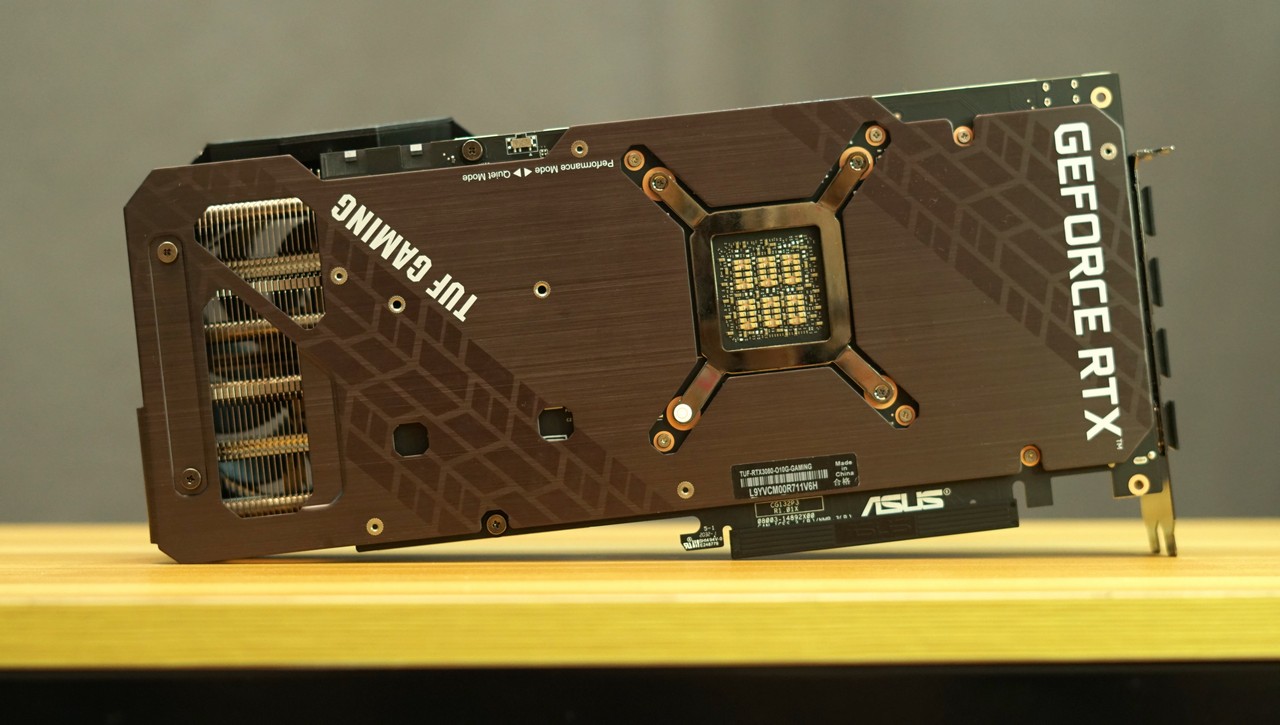
There’s a massive aluminum shroud that holds the fans, and the backplate is also made of aluminum as well. In fact, there’s really not a lot of plastic here save for the fan, which contributes to the thing’s massive weight.
Unlike NVIDIA’s Founder’s Edition RTX 3080, the ASUS RTX 3080 TUF Gaming OC uses two 8-pin power connectors, which makes for easier cable management since you don’t have to use an adapter to power it. There’s a dual BIOS switch on the side as well where you can switch from the default performance mode to a quiet BIOS. Power draw remains the same for both modes, as you’re only changing the fan profile here, so expect the card to run hotter using the quiet BIOS setting.
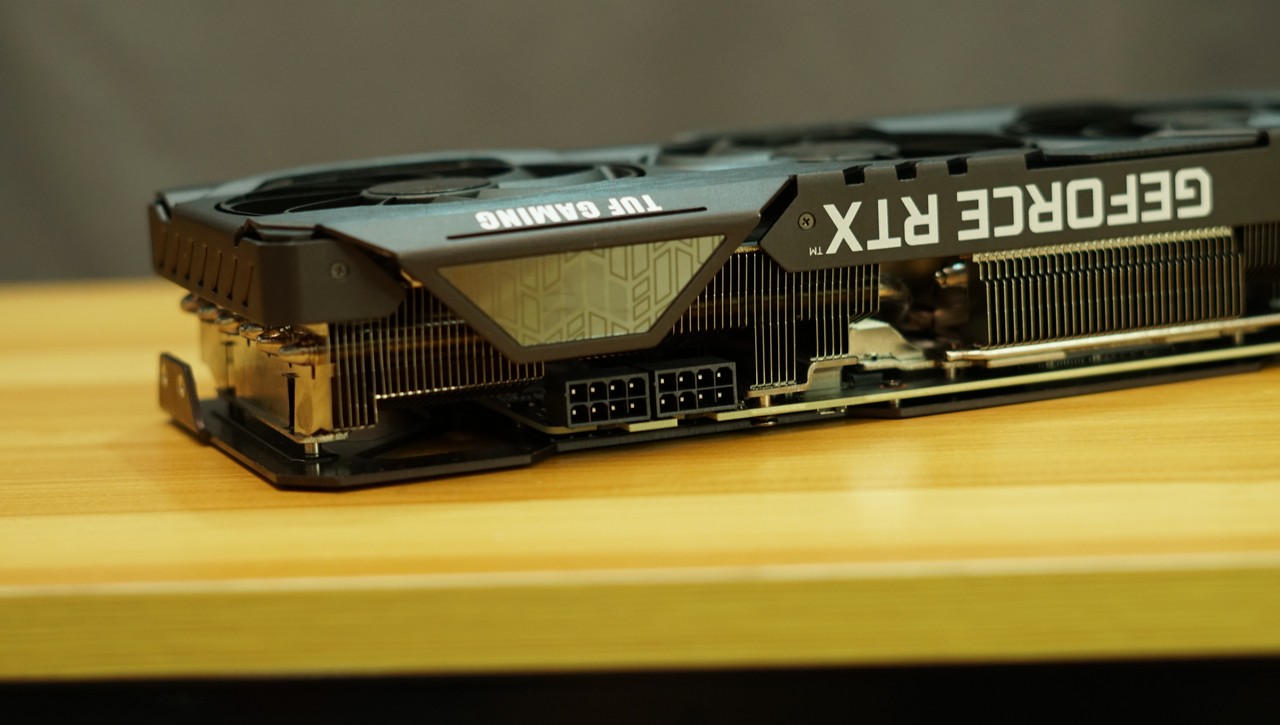
As this is a high-end gaming GPU there is still LED lighting on here, but thankfully it’s relegated to the TUF gaming logo and a small LED strip below it.
The axial-tech fans themselves are also pretty massive. They’re the only plastic bits of the card, measure in at 90mm, and automatically shut off once the card dips below 55C.
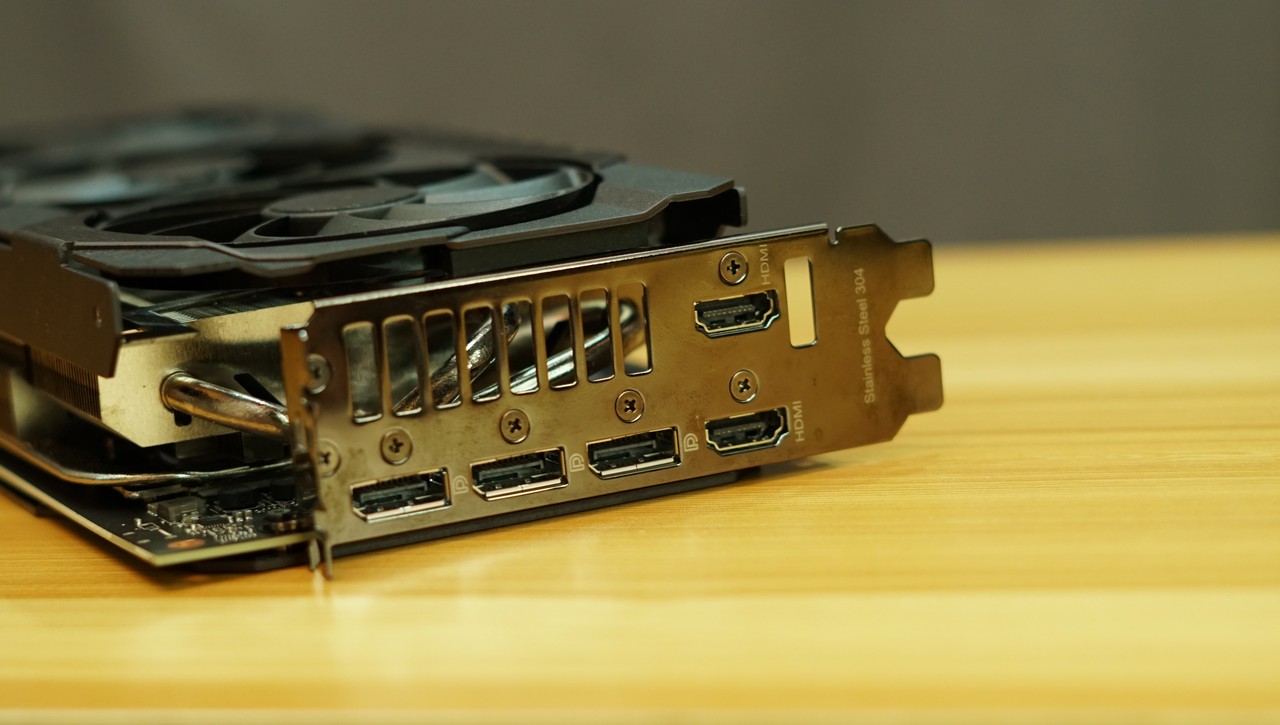
The back of the card holds two HDMI 2.1 ports and three DisplayPort 1.4a outputs, and ASUS says they’ve fashioned the I/O bracket out of stainless steel. That should be useful in countries like ours that have high humidity year-round, which have led to some I/O brackets of GPUs to rust over time.
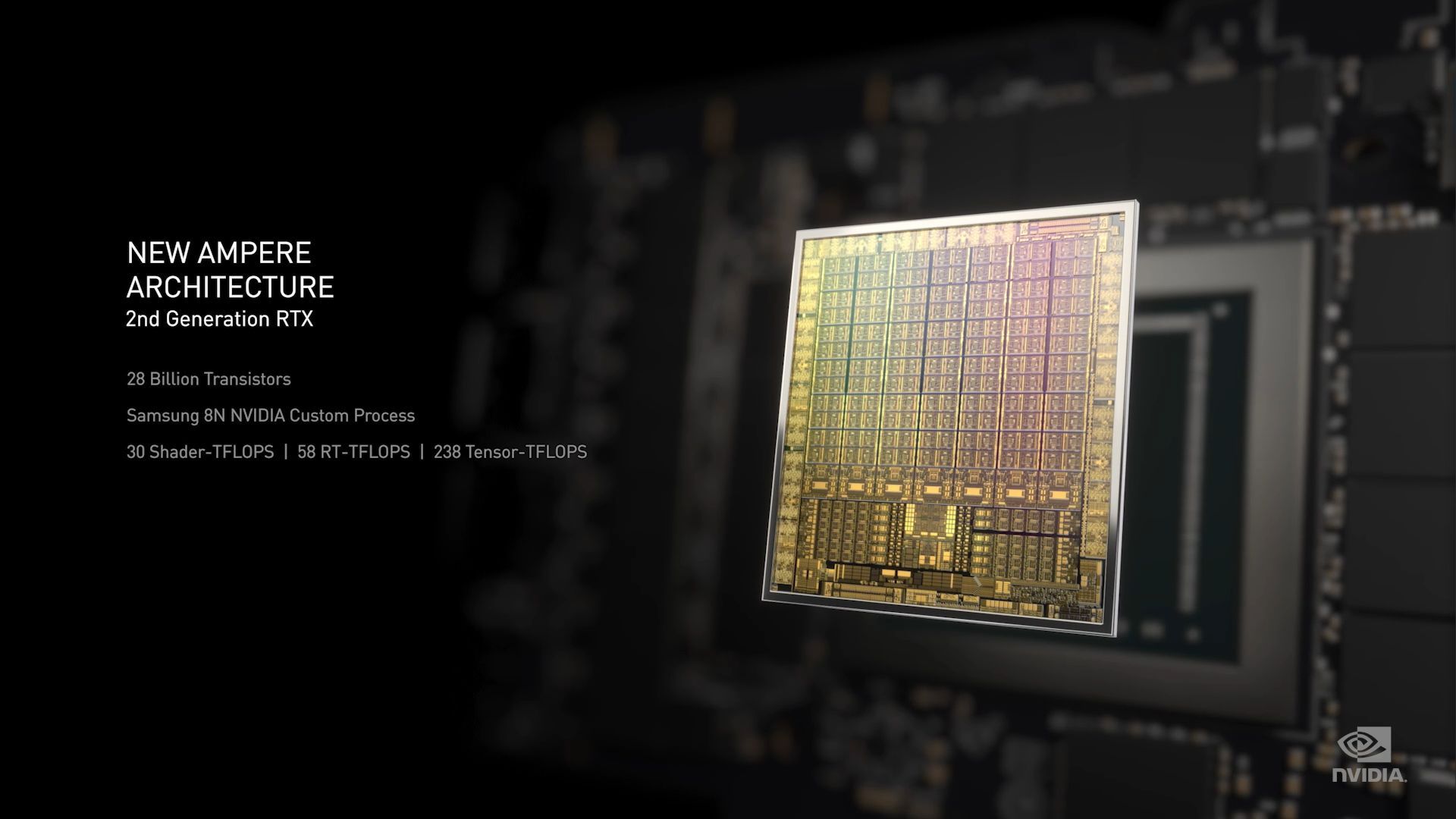
Features
What really makes the RTX 3080 fly past its Turing brothers is the sheer amount of CUDA cores it has compared to the last iteration. For the layman, CUDA cores are basically NVIDIA’s equivalent of CPU cores, and like CPU cores, the more you have, the better and faster your card will run.
The GA102 GPU which is the heart of the RTX 3080, has a massive 8,704 of CUDA cores. The RTX 2080 Super that it’s replacing, has only 3,072 CUDA cores, which shows you just how advanced the new card is compared to the previous generation.
NVIDIA has managed to squeeze so many CUDA cores into the GA102 thanks to the improved 8nm production process done by Samsung. The card’s runs at 1,710MHz, and it has faster memory too, thanks to the 10GB GDDR6X in its chassis, delivering 760GB/s of bandwidth compared with the sub-500GB/s of the standard GDDR6 of the last generation.
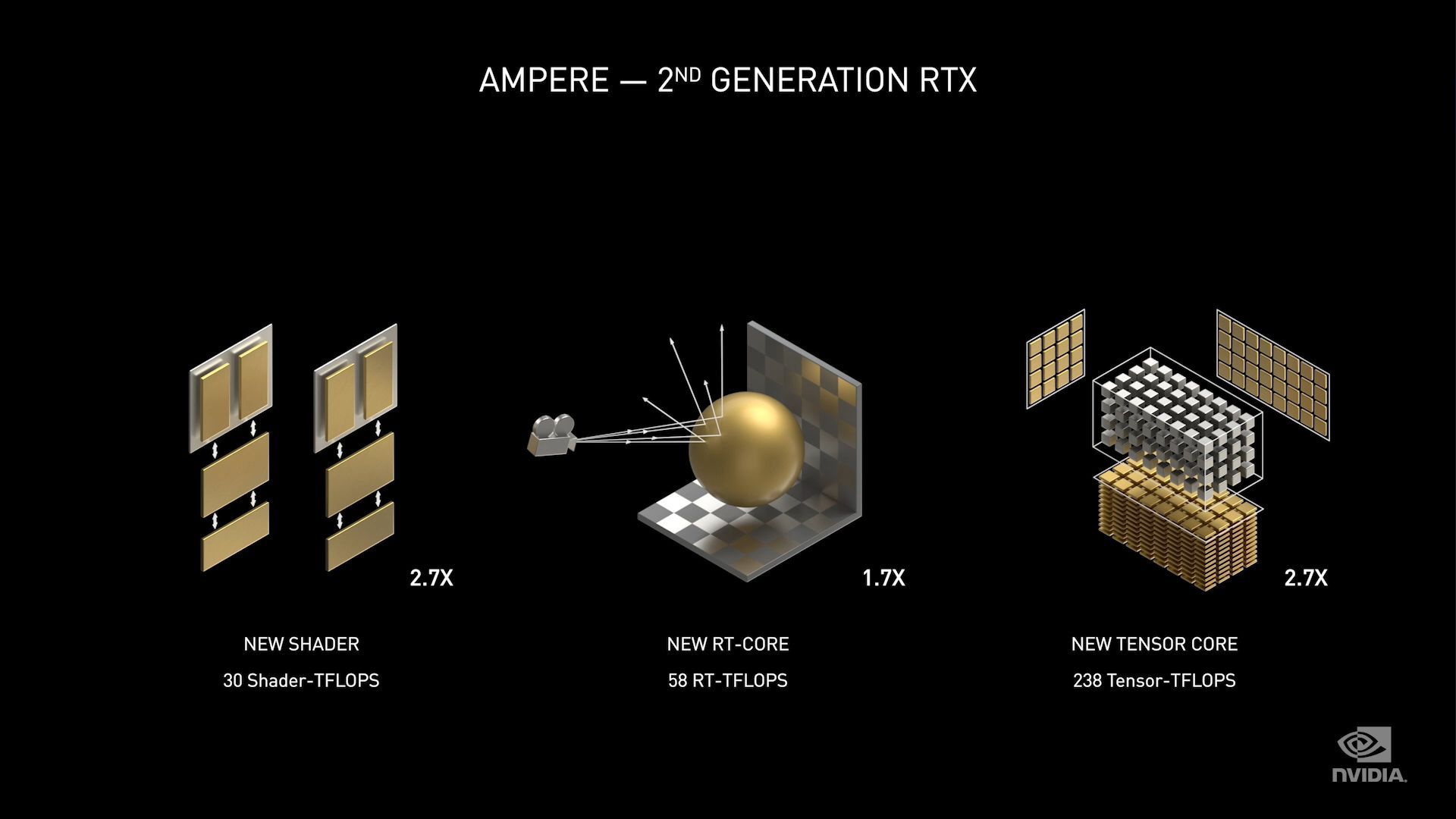
The new GPU is also capable of better ray-tracing performance. Ray Tracing is a lifelike way of rendering light and shadows in a scene, and it typically takes A LOT of computing power to pull off, so much so that enabling ray tracing with the previous generation of cards meant taking a huge performance hit, which ultimately meant that gamers usually kept RT off when playing games. To address this, NVIDIA put in around 68 RT cores in the RTX 3080, enough that you won’t take a significant performance hit when you turn this feature on, something that you’ll see in our benchmarks later.
We’re not going to drown you with numbers and tech jargon as there are a lot of other places that can offer you a deeper dive into NVIDIA’s new architecture, suffice to say that the RTX 3080 is leaps and bounds ahead of the previous generation.
There’s one big downside to all of these features though. The RTX 3080 is VERY power-hungry and has a thermal design power (TDP) of 320 watts. NVIDIA suggests that you upgrade your power supply to at least 750W to be on the safe side if you’re looking at picking an RTX 3080-based card.
One of the things you can expect from AIBs like ASUS and their custom cards is a small factory OC applied to the GPU. The ASUS RTX 3080 TUF Gaming OC is an exception, with ASUS advertising a 1,815MHz (OC Mode) clock, which is 100Mhz more than what the Founder’s Edition version gives you.
Performance and benchmarks
Alright, time for the benchmarks. Our test bench is an AMD Ryzen 9 3900XT on an ASRock X570 Taichi board with 16GB of 3200MHz memory, AORUS NVMe Gen4 SSD (2TB), and a Cooler Master ML240L AIO. We weren’t able to source a true 4K monitor for this review, though we did use a 3440 x 1440 ultrawide for resolutions past 1440P.
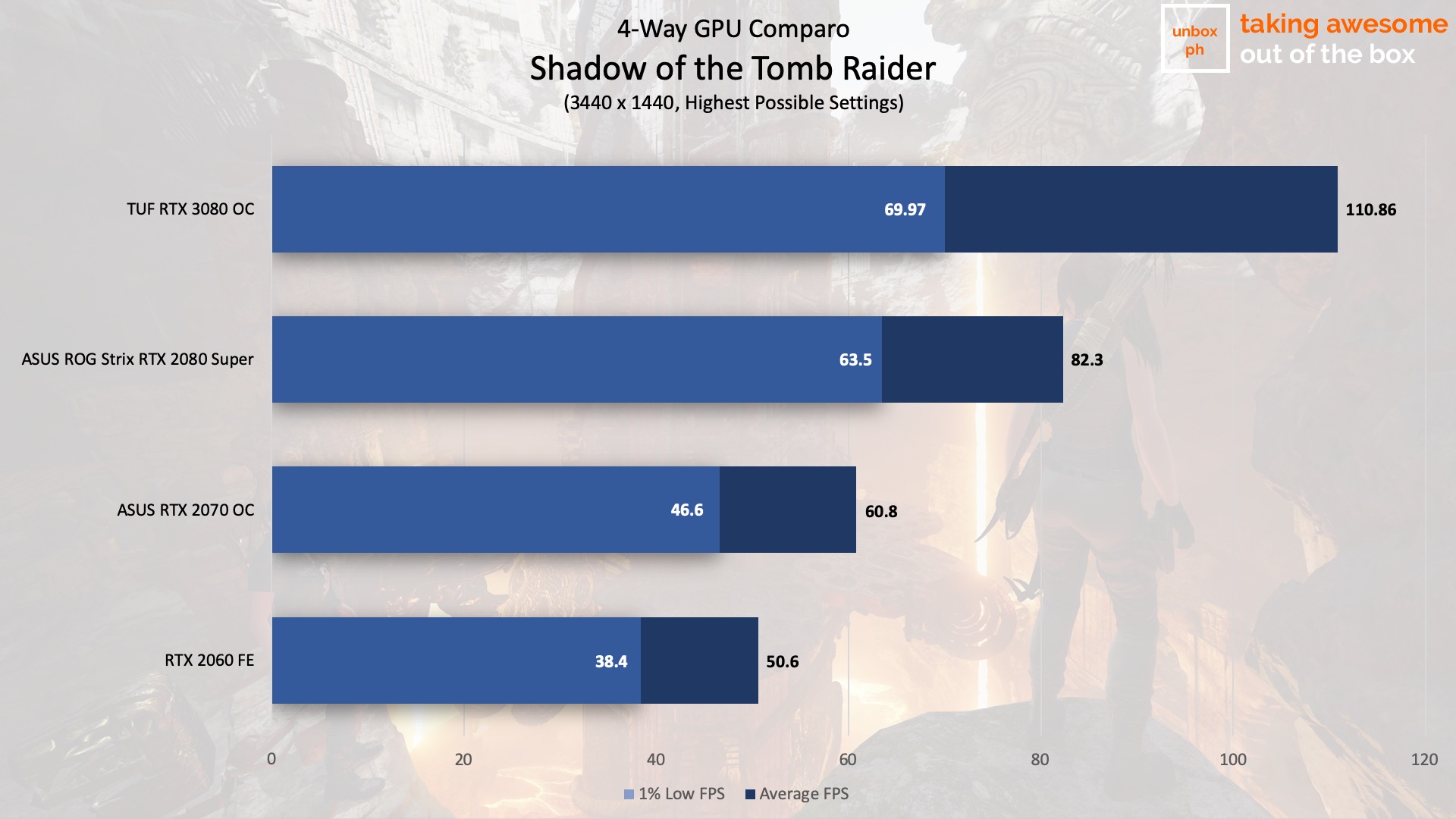
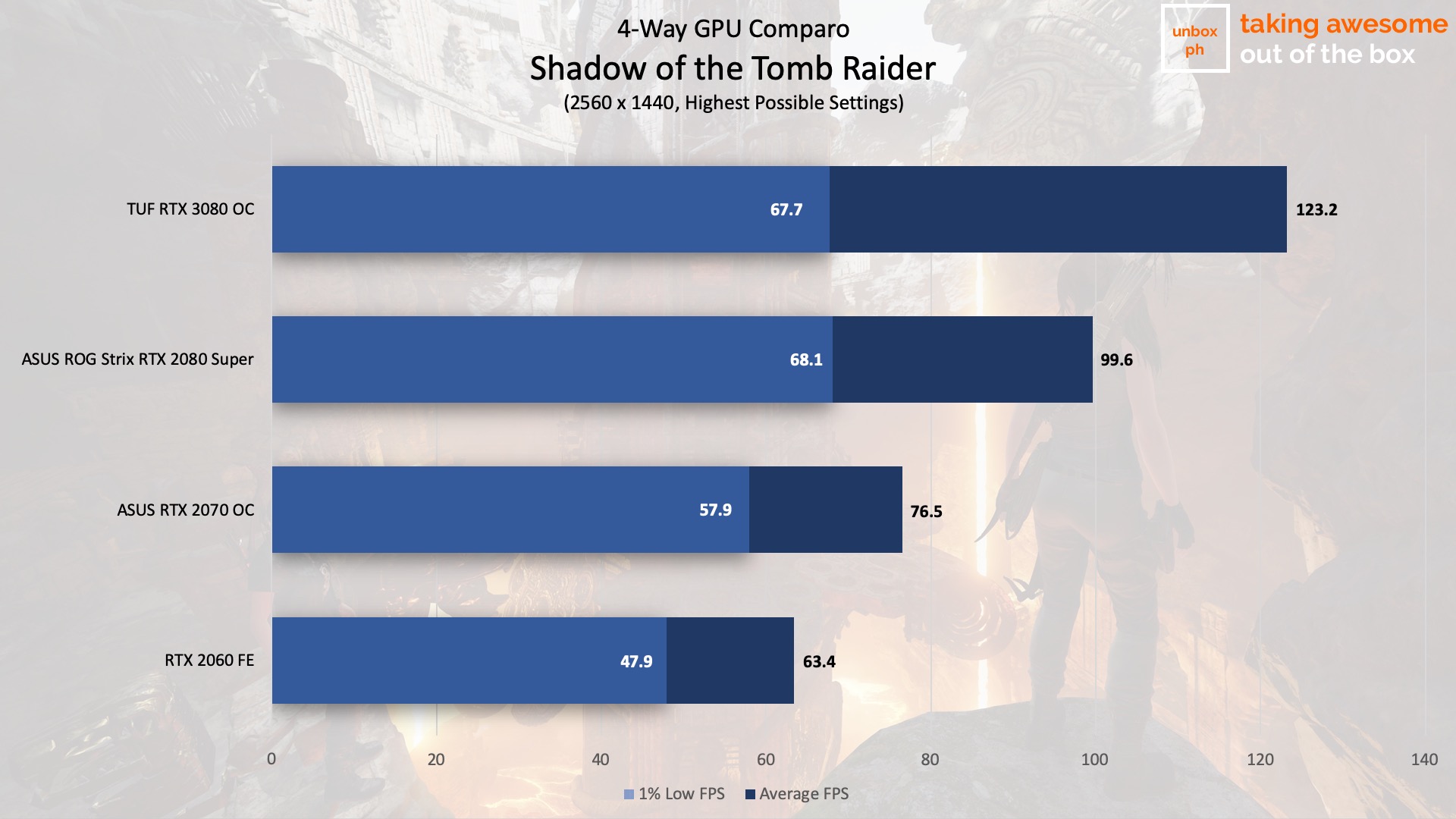
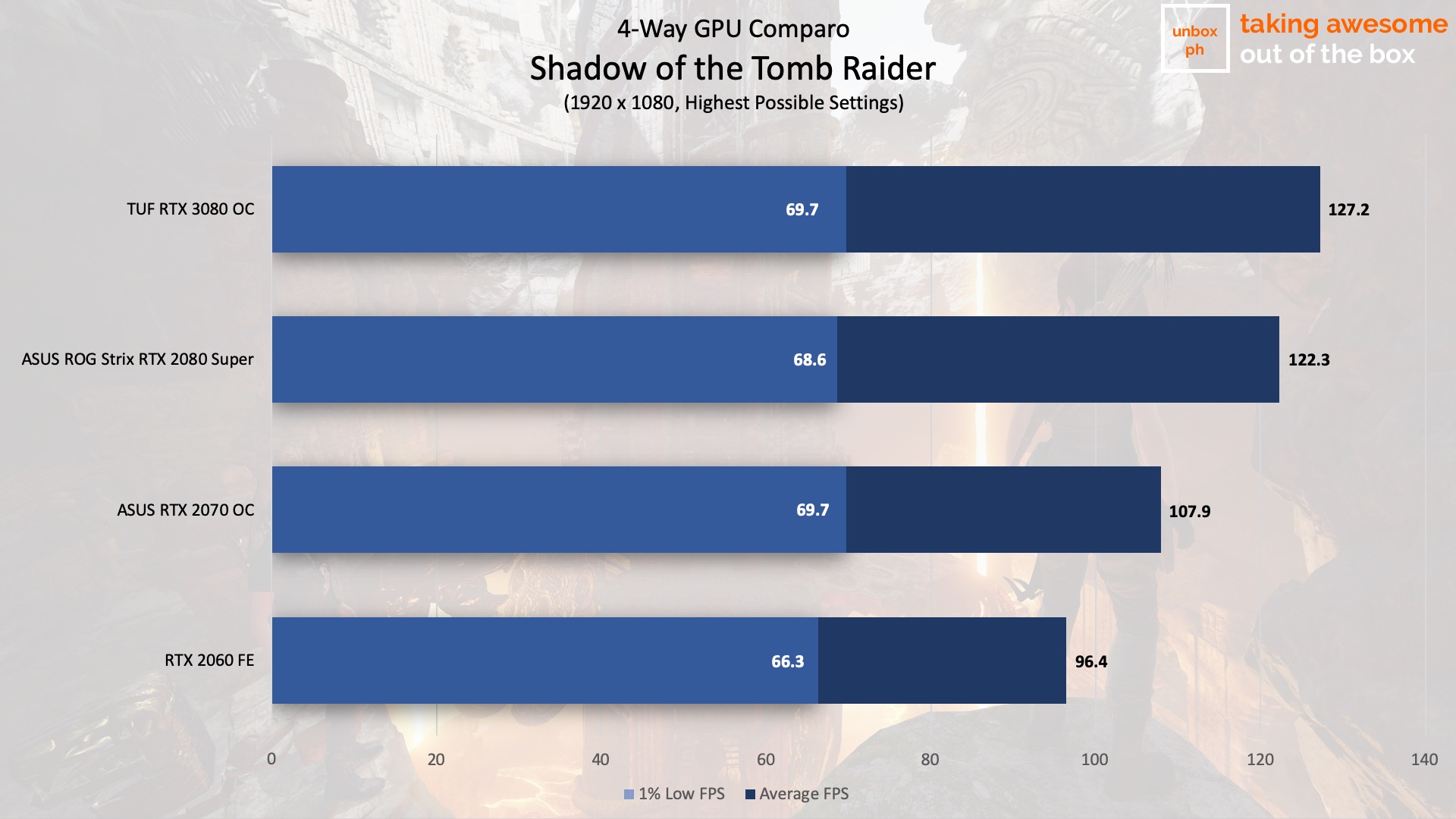
Right off the gate, you can see how big the performance gaps are with the RTX 3080 VS the RTX 2080 S. In older games like Shadow of the Tomb Raider and Total War: Warhammer II, you’re regularly going beyond 100 FPS on the highest possible graphic settings in 3440 x 1440.
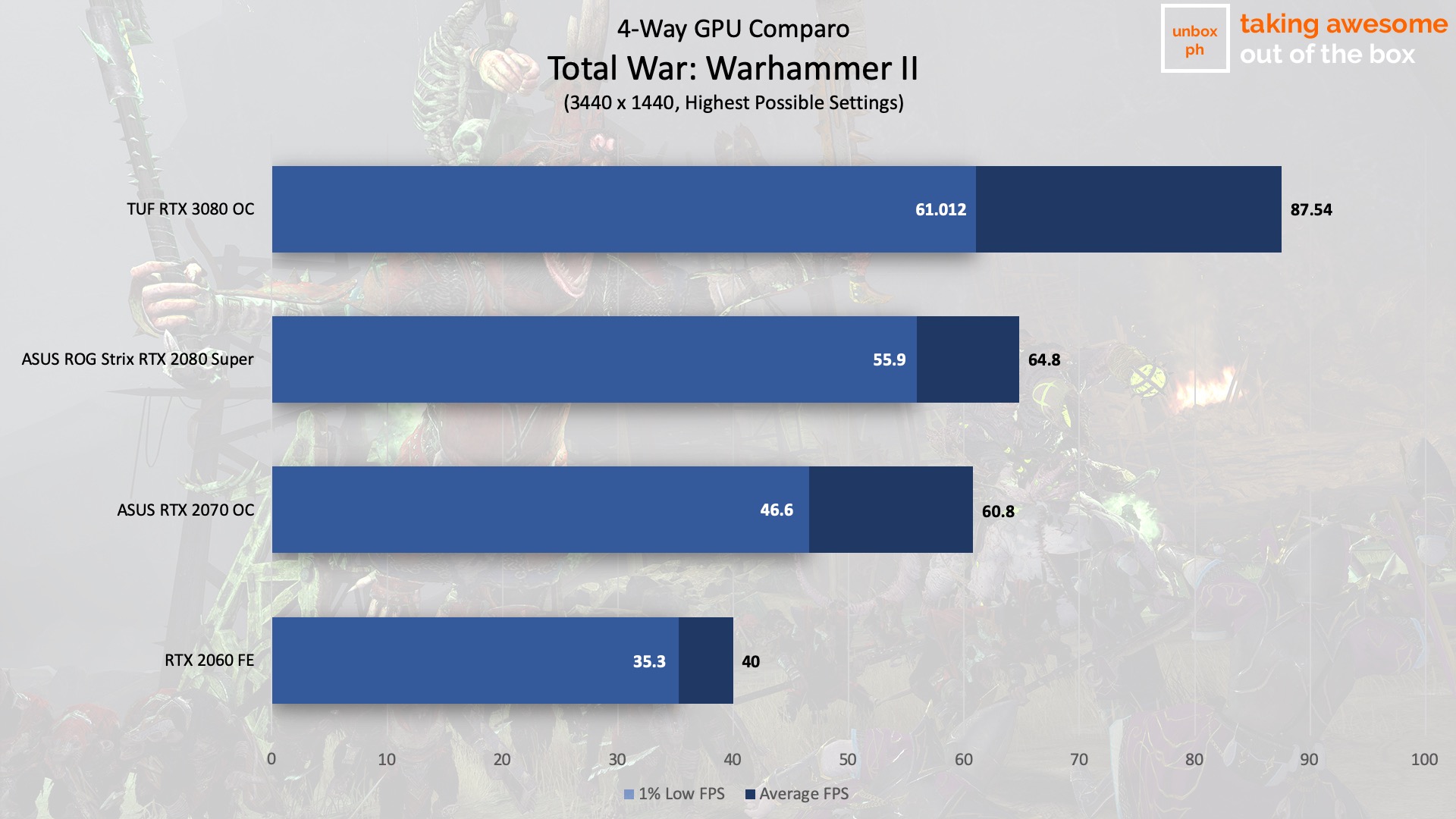
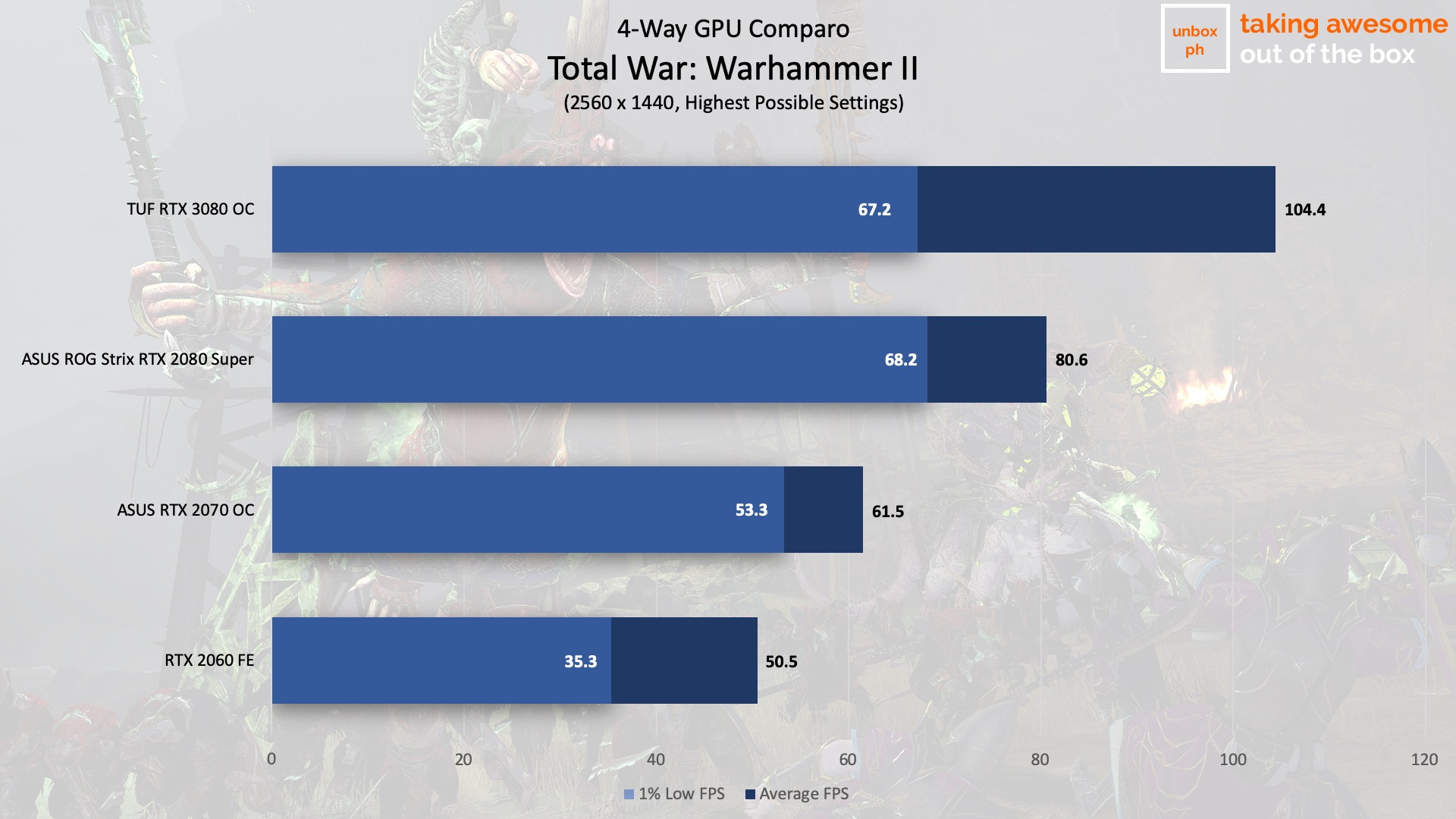
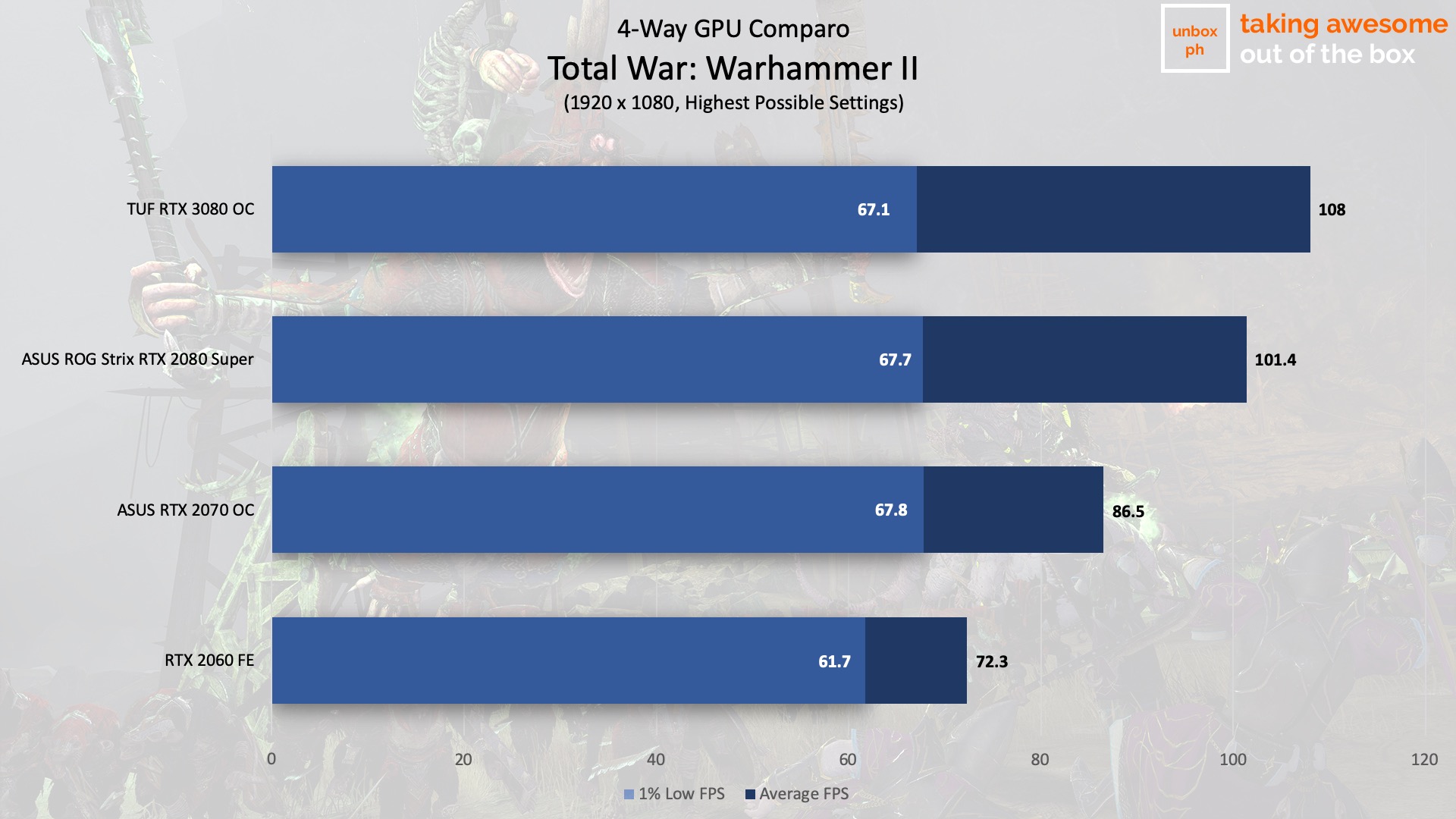
In contrast, the RTX 2080 Super barely goes past 80 and struggles to achieve 60 FPS in Total War: Warhammer II.
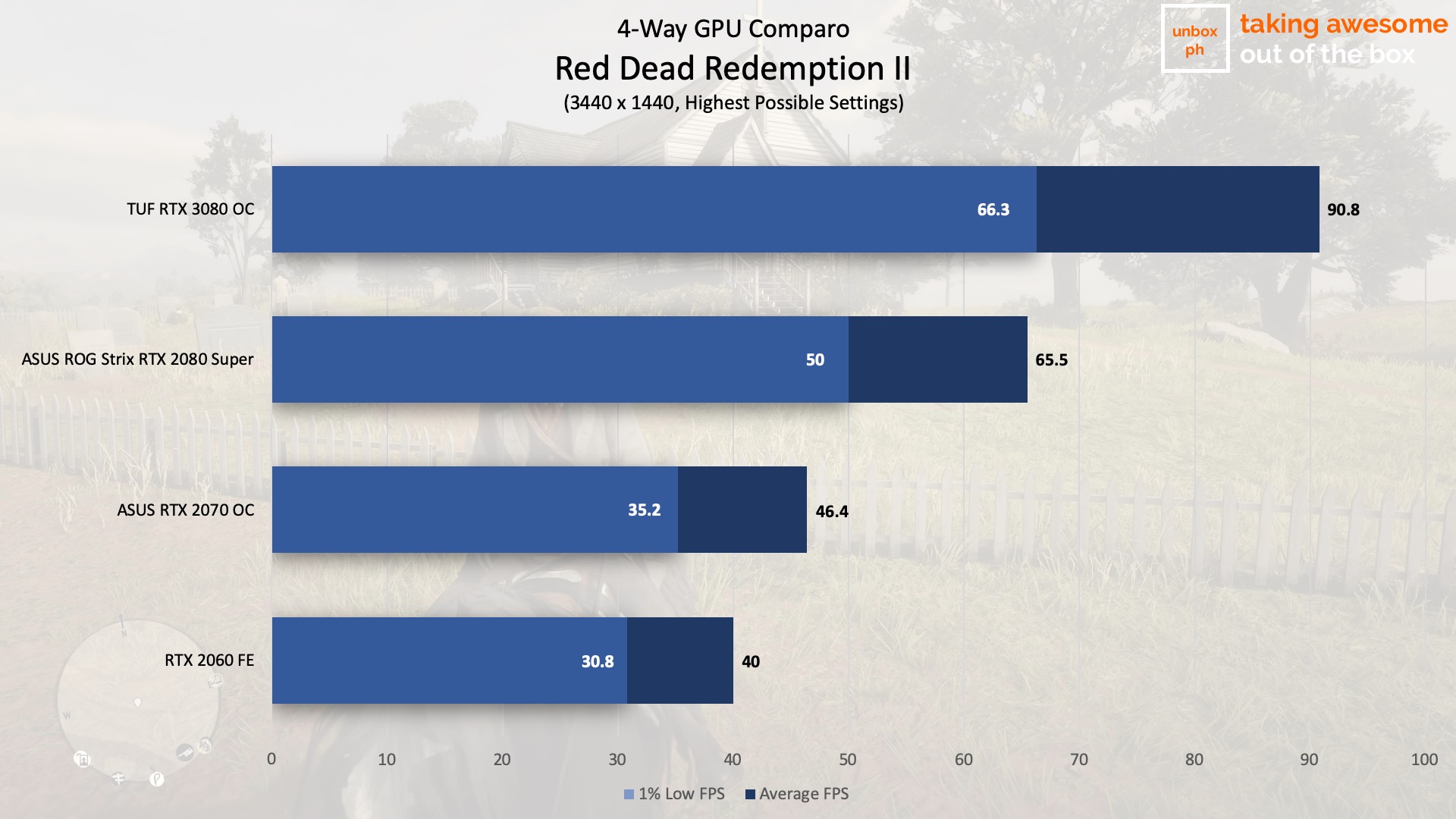
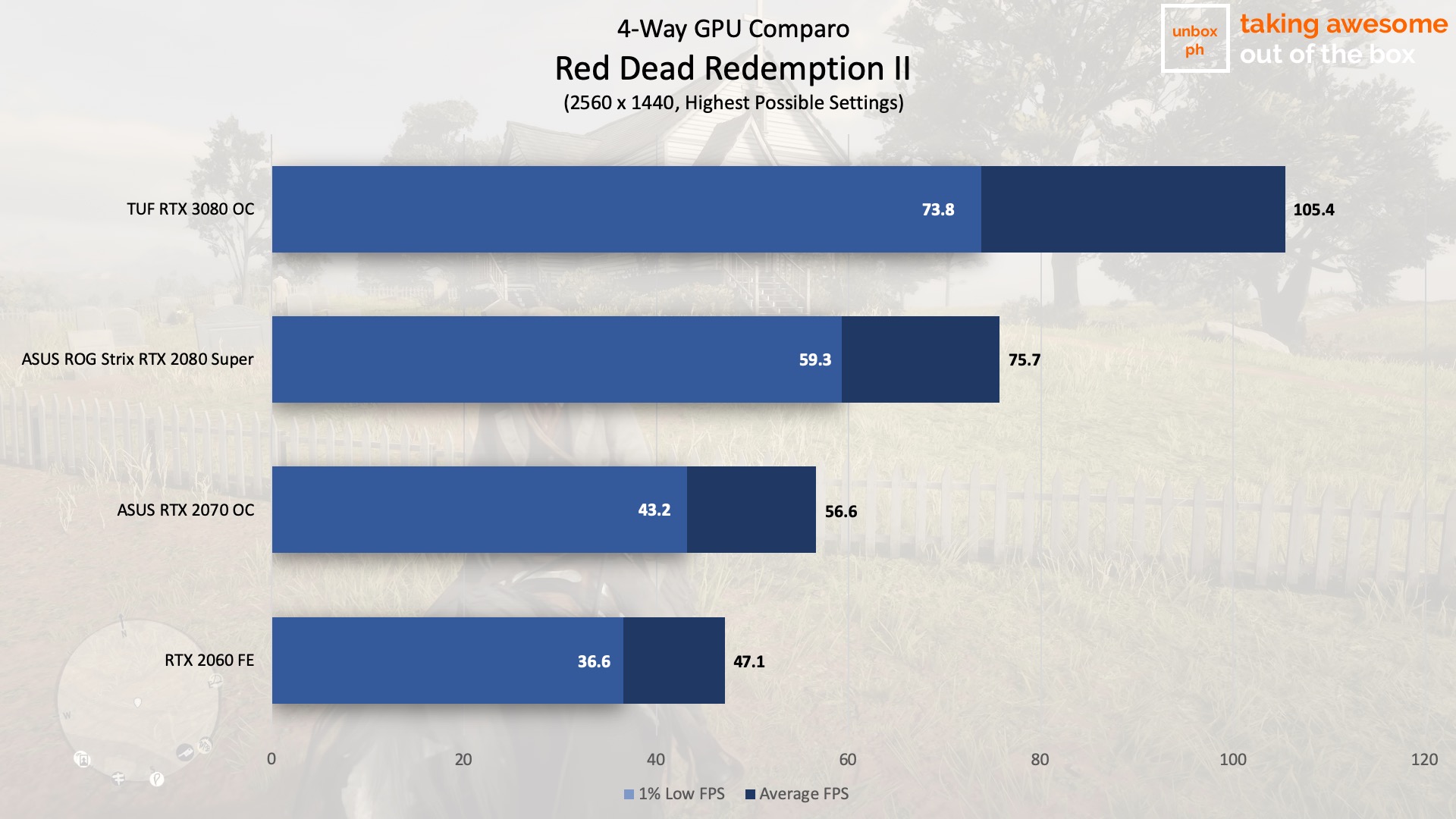
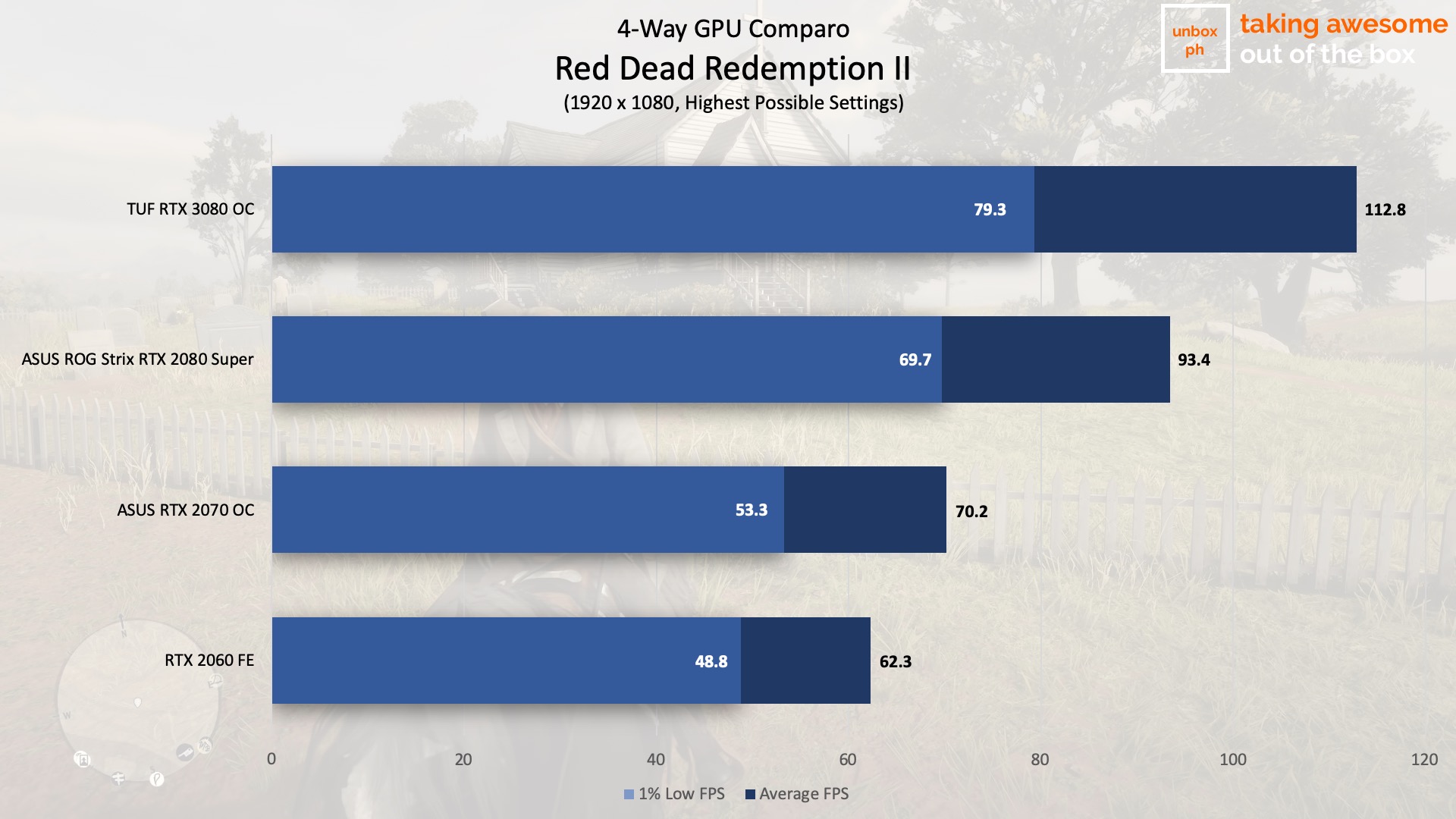
The rest of the games in the testing suite are relatively newer titles, and here you can really see what kind of performance the RTX 3080 is capable of in terms of when it comes to modern AAA games.
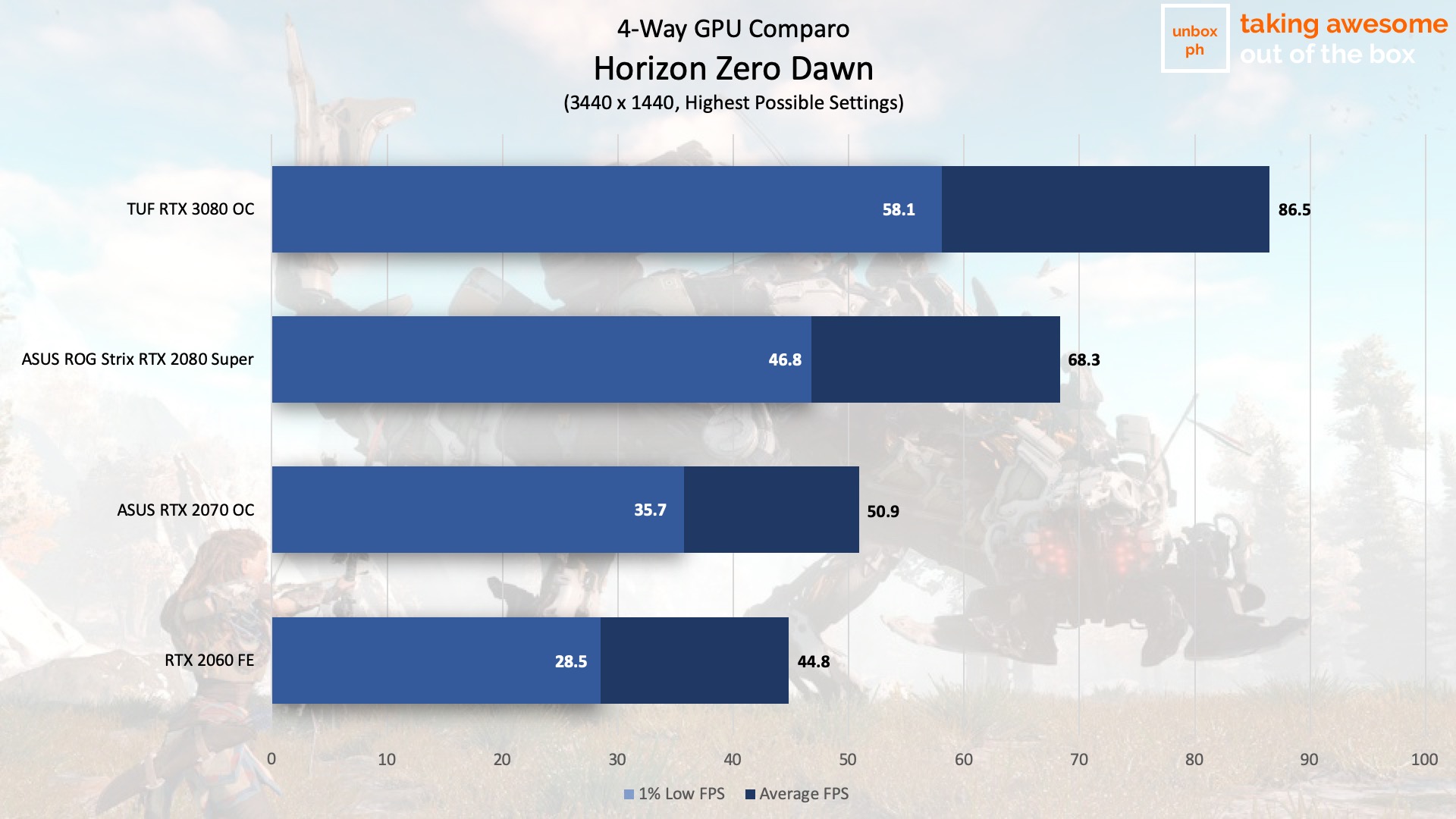
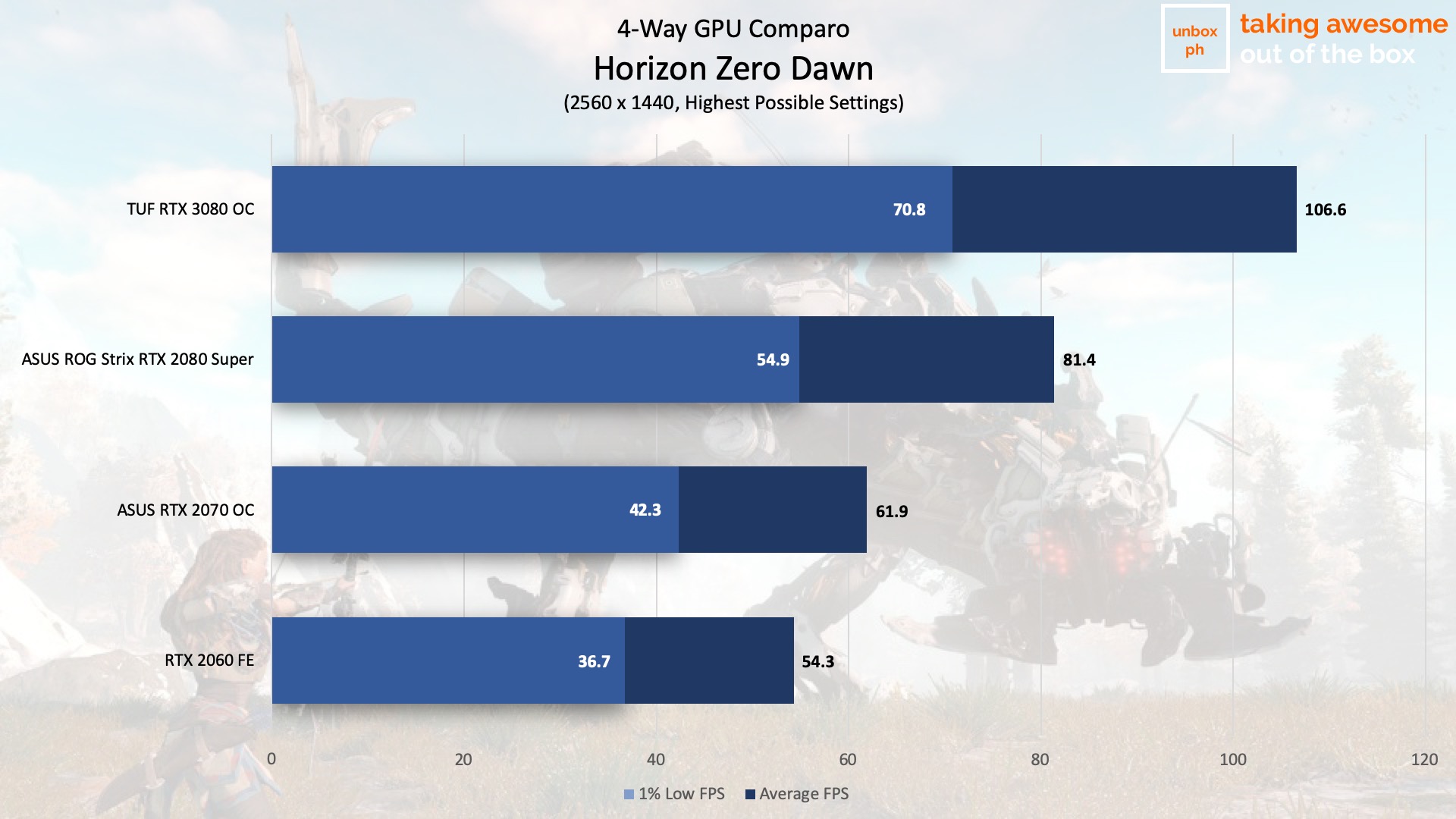
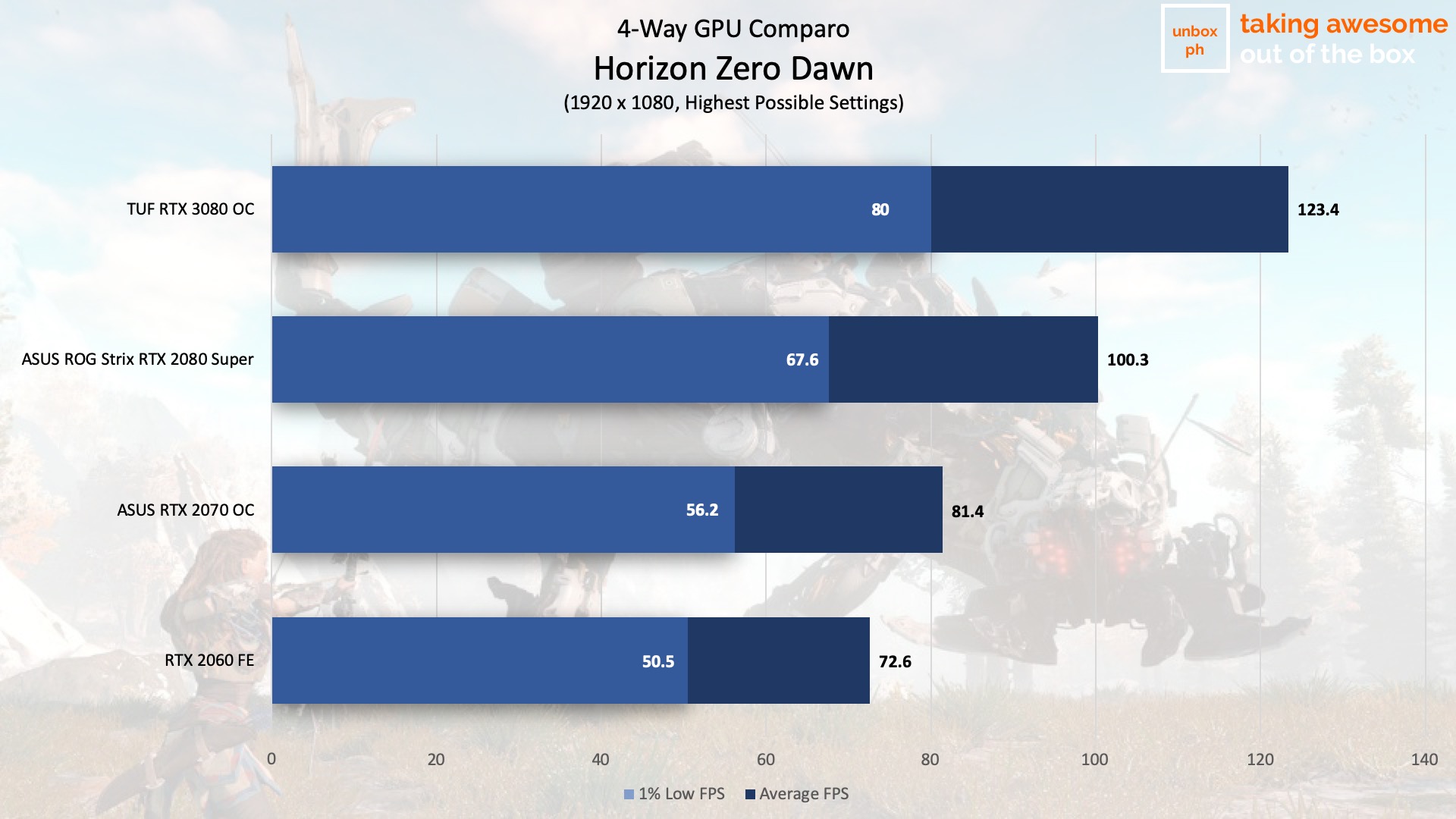
One thing to note with our lower than average results in Metro Exodus is that we ran the games through the built-in benchmark with the Extreme graphics preset, which is much, much more brutal than the actual game itself. Gamer’s Nexus actually goes into great detail about how final FPS numbers differ on the benchmark tool VS actual gameplay, but a good rule of thumb here is to add around 30 FPS to the result.
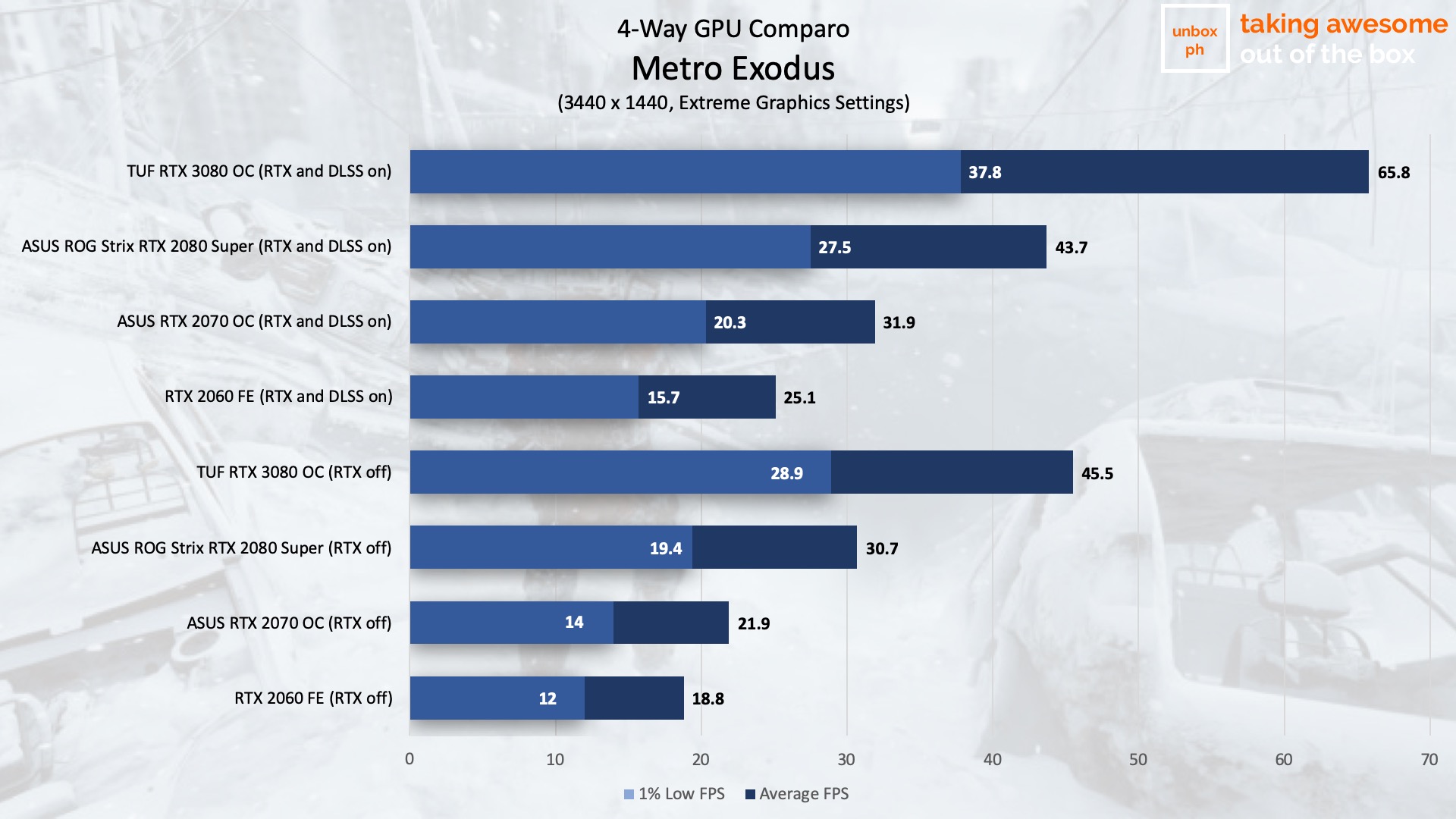
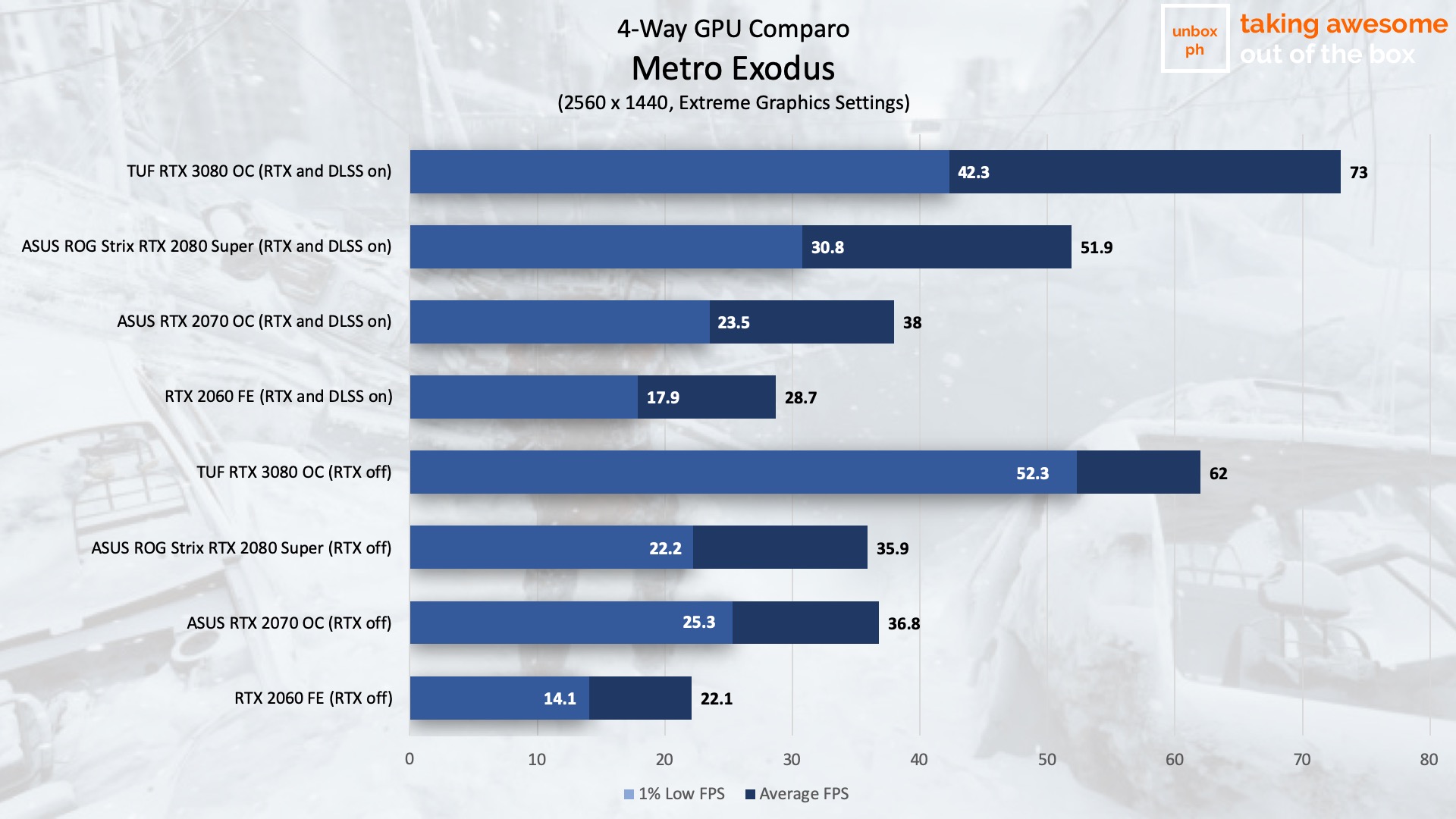
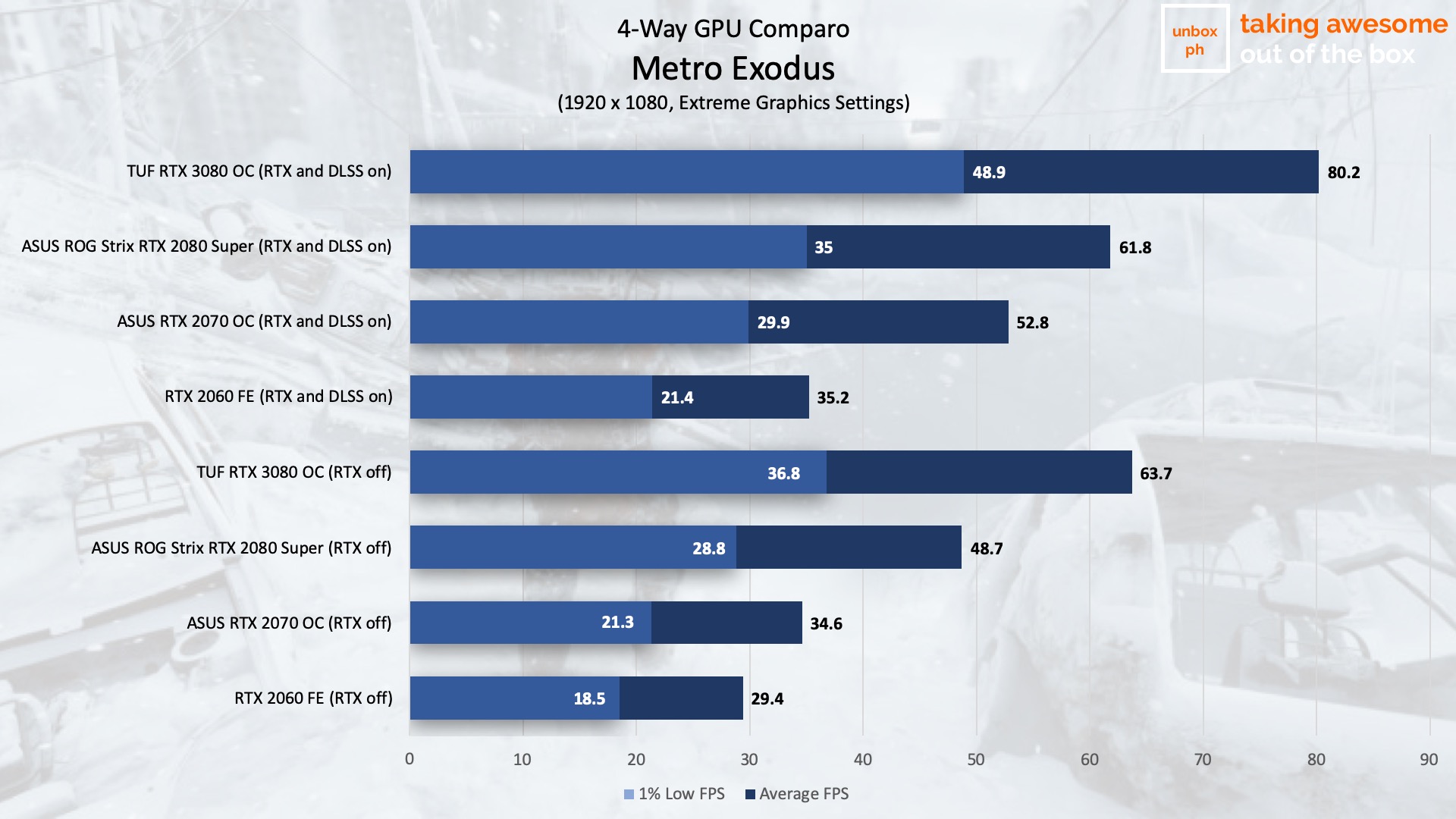
We also ran our two more modern RTX-enabled games with RTX On, set to the highest possible setting, as well as DLSS on. NVIDIA’s Deep Learning Super Sampling technology is an NVIDIA-exclusive technology that uses the power of AI to boost your frame rates in games with graphically-intensive workloads. We’re not going to go through how DLSS works here (as this video explains) but it should help in offsetting the performance penalty that turning on RTX would incur.
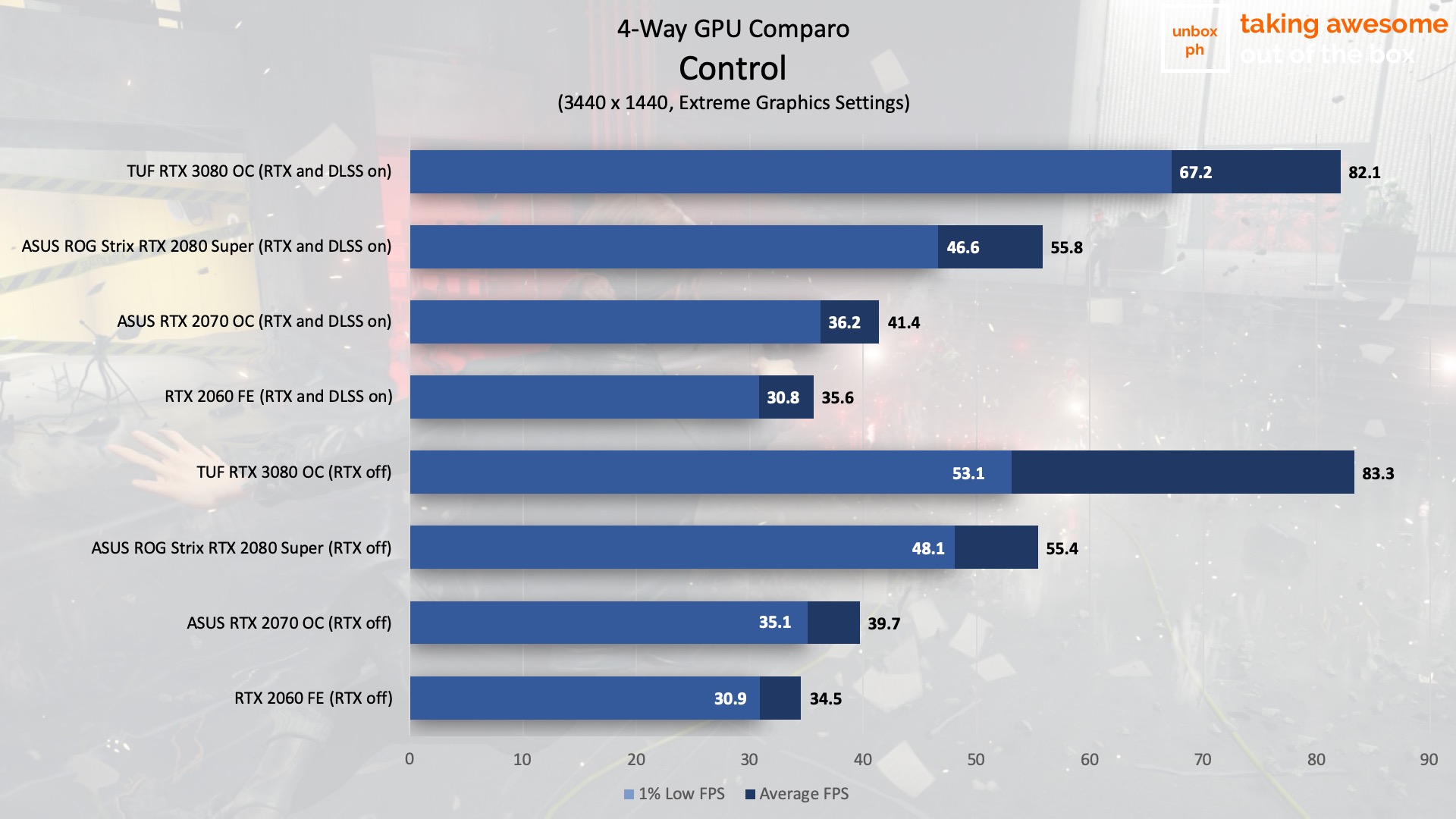
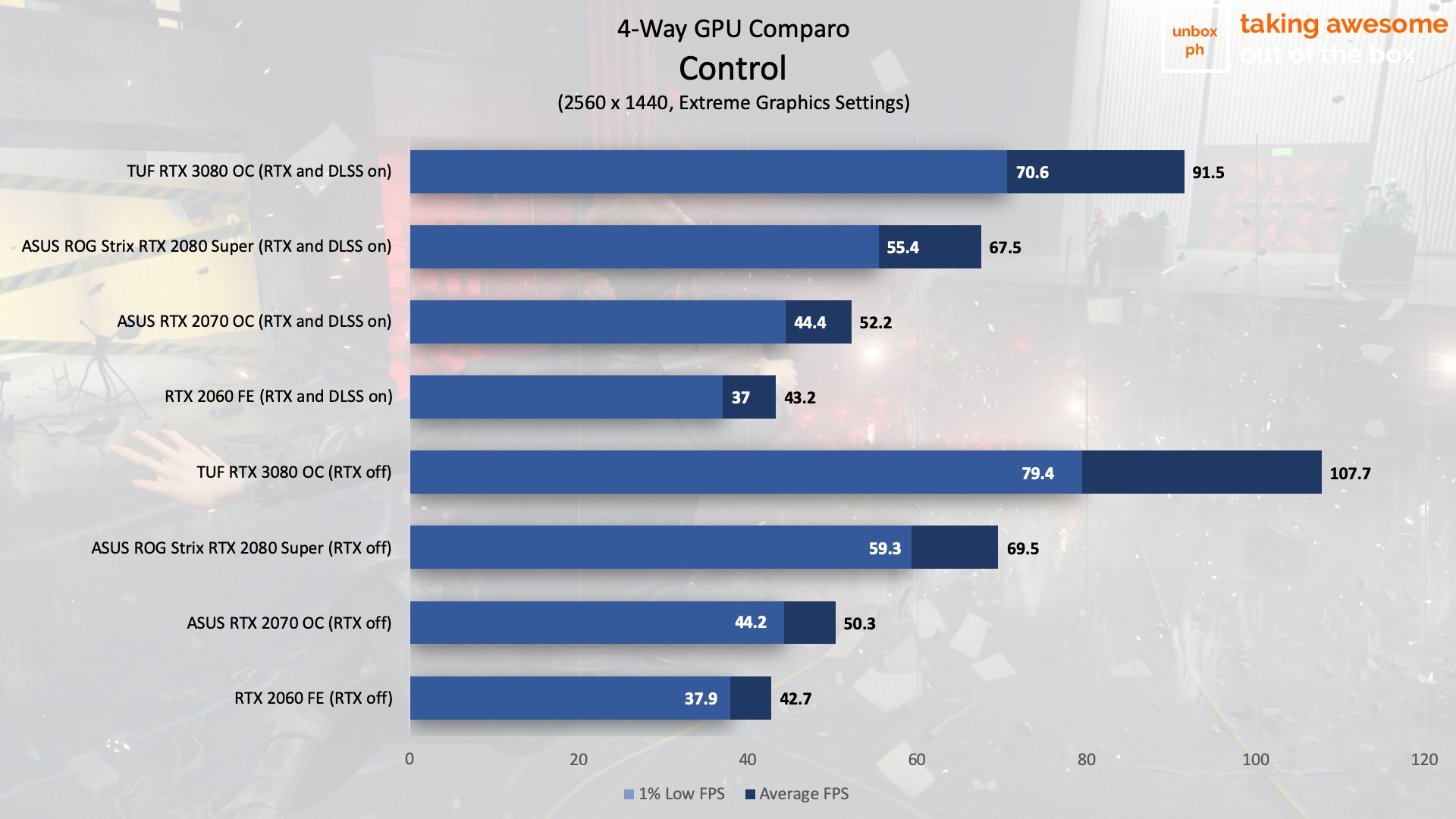
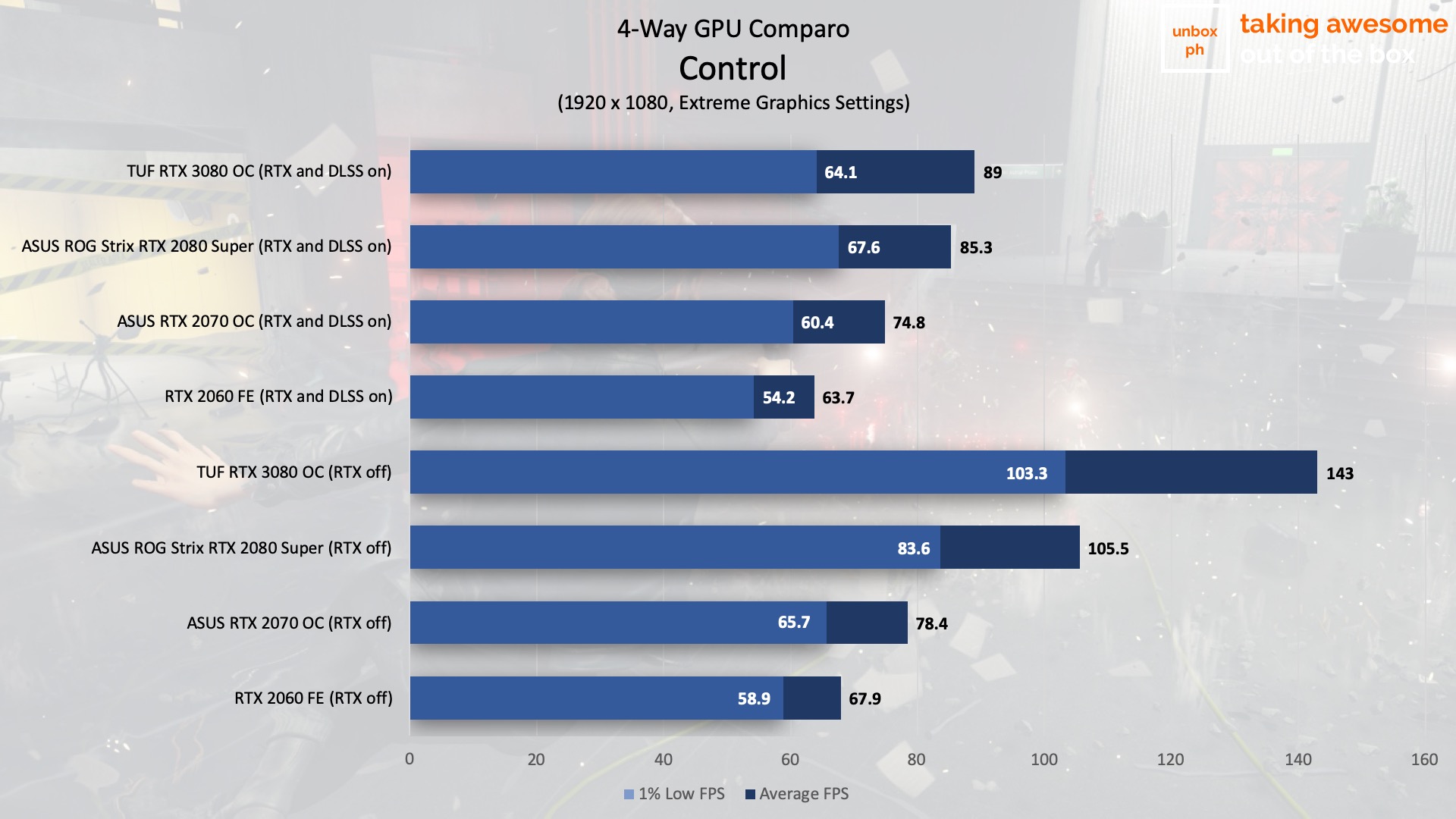
In fact, in games like Metro Exodus, turning on RTX with DLSS gives you higher frames despite the added workload that ray tracing requires.
Even with that help though, all the cards except the RTX 3080 have trouble clearing the 60FPS barrier above full HD, and only the RTX 3080 is able to give above 60 FPS performance in Metro Exodus on resolutions higher than 1080p.
All of that comes at a price though. We did mention that the Founder’s Edition RTX 3080 draws around 320 watts of power. HWiNFO reports peak power draw for the ASUS RTX 3080 TUF Gaming OC at 338 watts. Again, we recommend upgrading to a 750W power supply or higher if you’re looking to pick this behemoth up.
As far as temperatures go, the card had a reported temperature of 50C in a room that had an average temperature of around 31C. Peak temps in a closed case (which is the typical use case for such a card) was around 71C. This was after playing continuously for around an hour.
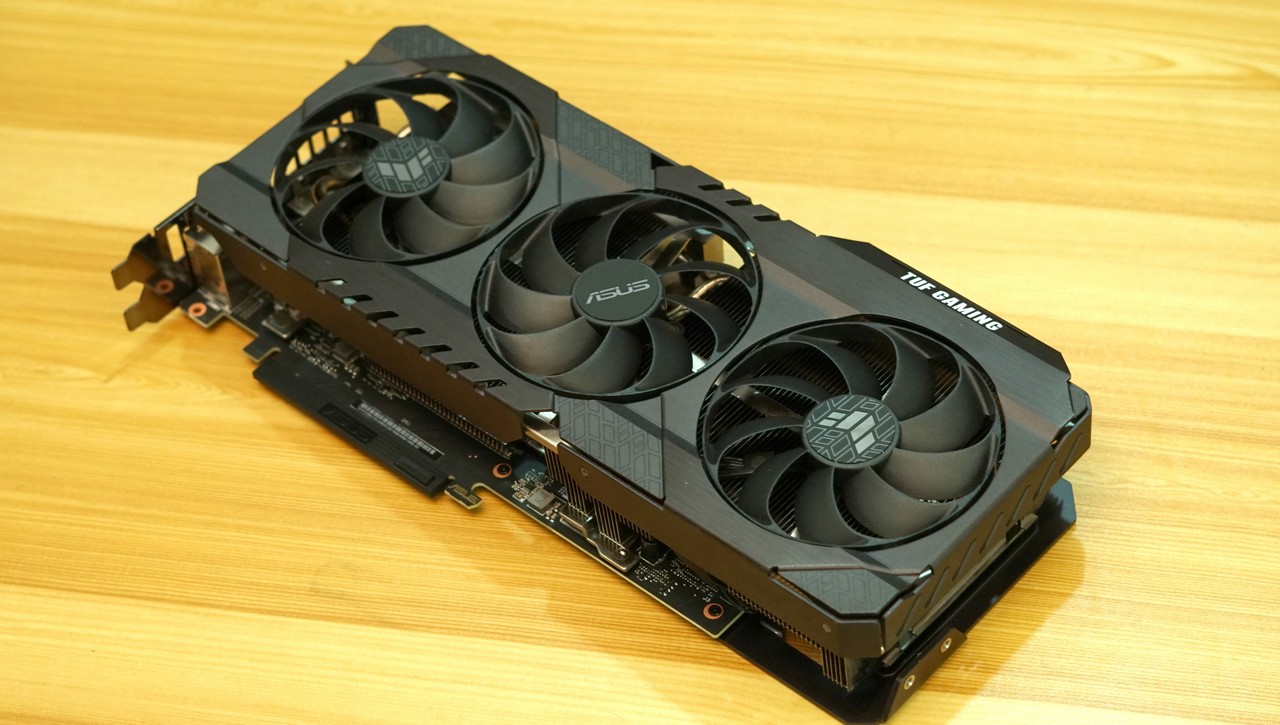
Conclusions and wrap-up
NVIDIA’s certainly delivered on all of their promises with their new card, delivering the performance that’s guaranteed to deliver 4K gaming easily.
That is if you can find them though, as NVIDIA’s RTX 3080 has proven to be incredibly difficult to source, and if you CAN find cards made by other AIBs, they have SRPs that are ridiculously over NVIDIA’s 699$ MSRP for the FE. The ASUS RTX 3080 TUF Gaming OC is priced at Php 48,490, which is understandable given the OC feature. You can get the non-OC variant for less at Php 41,000, which makes it one of the cheapest third-party RTX 3080’s available in the market.


